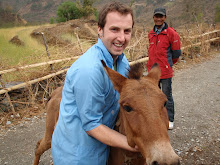It’s the Nepali calendar year 2066 and I’ve been wondering if this is what the future will really hold. I’ve been working here over the last 11 months and I have had to cope with 16 hour power cuts, water shortages and queues outside petrol stations that stretch for kilometres. This little country, wedged in between two emerging superpowers, India & China is still struggling to find its feet after the decade long Maoist insurgency.
But one thing that hasn’t been making the headlines is the shortage of food throughout the country. The UN’s FAO (Food and Agriculture Organisation) is expecting food deficits in 40 out of 75 districts in Nepal. Its World Food Programme is providing food assistance to 2.2 million people or approximately 7% of the population, in what can only be described as a food crisis. We are all familiar with the horrific images of acute hunger, those from famine-struck countries depicting emaciated children with pot bellies, predominately from sub-Saharan Africa. But few are aware of the type of hunger that affects the majority of those suffering from hunger and hunger related illness around the globe. Chronic malnutrition or malnourishment affects 90% of the estimated 800 million people starving at this moment, many of whom are at risk of falling into the acute hunger category. And this is what is affecting so many of Nepal’s people.
VIVA work in the area of livestock development and our current project here in Nepal is based on research that shows a massive deficit in the nutritional status of cattle and domestic buffalo. If you understand how important livestock are to the people of Nepal then you can realise the potential impact our project can have. Firstly, animals provide food and food security in the form of meat, milk, eggs, etc, a valuable source of essential proteins required for bodily growth, development and function. Animal traction serves to pull carts and to plough fields, cultivating food crops and vegetables where tractors can’t reach and hand hoes would take days. Animal manure is extremely valuable when chemical fertilizers are both expensive and unavailable.
VIVA is funding a community based livestock development project which focuses on the women farmers of the project sites as they do 80% of all the agricultural work. It aims to empower these women with the skills they require to increase production from their animals, directly benefitting 375 families. Training is the backbone of all of VIVA’s projects because the old adage of teaching a man to fish is as valid today as it ever was. We also train Community Animal Health Workers (CAHW), which provide basic animal health care to the villages because healthy animals mean healthy farmers.
If we can improve the livestock practices of farmers in Nepal, then we can increase production and so, provide better nutrition for the farming family and excess produce to sell in the market. This can stave off chronic hunger and prevent so many people from suffering starvation. Of course none of our work is possible without the help of you, the Irish public. So log on to www.viva.ie or www.vivanepal.blogspot.com to see how you can help.
Thursday, July 30, 2009
Subscribe to:
Post Comments (Atom)




























No comments:
Post a Comment